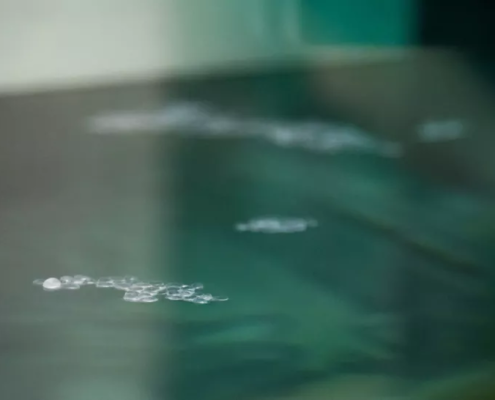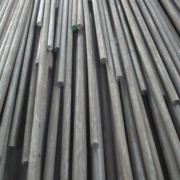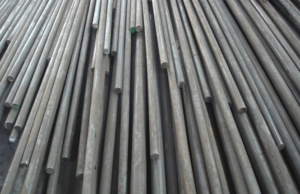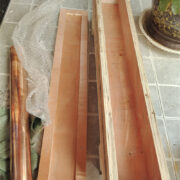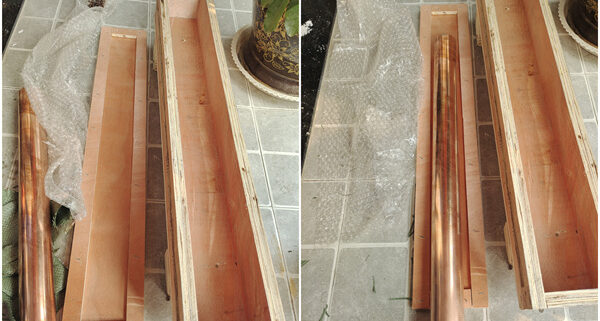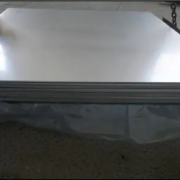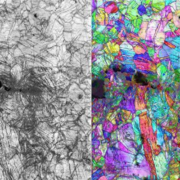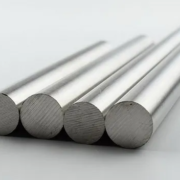1. What are martensitic stainless steel and duplex stainless steel?
The microstructure is martensitic at room temperature, and its mechanical properties can be adjusted by heat treatment. In layman’s terms, it is a type of hardenable stainless steel. The steel grades belonging to martensitic stainless steel include 1Cr13, 2Cr13, 3Cr13, 4Cr13, 3Cr13Mo, 1Cr17Ni2, 2Cr13Ni2, 9Cr18, 9Cr18MoV, etc.
2. Commonly used welding methods
Welding Martensitic stainless steel can be welded by various arc welding methods. At present, electrode arc welding is still the main method, but the use of carbon dioxide gas-shielded welding or argon and carbon dioxide mixed gas-shielded welding can greatly reduce the hydrogen content in the weld, thereby reducing the sensitivity of the weld to cold cracking.
3. Common welding materials
(1) Cr13 martensitic stainless steel electrodes and wires
Usually, when the weld has high strength requirements, the use of a Cr13 martensitic stainless steel electrode and wire can make the chemical composition of the weld metal similar to that of the base metal, but the weld has a greater tendency to cold crack.
Precautions:
a. Preheating before welding is required, and the preheating temperature should not exceed 450°C to prevent embrittlement at 475°C. After welding, heat treatment is carried out. The post-weld heat treatment is to cool to 150-200 ° C, keep it warm for 2 hours so that all parts of the austenite are transformed into martensite, and then immediately perform high-temperature tempering, heating to 730-790 ° C, and then holding time is every 1mm plate thickness is 10min, but not less than 2h, and finally air-cooled.
b. In order to prevent cracks, the content of S and P in electrodes and wires should be less than 0.015%, and the content of Si should not be greater than 0.3%. The increase in Si content promotes the formation of coarse primary ferrite, resulting in a decrease in the plasticity of the joint. The carbon content should generally be lower than that of the base metal, which can reduce the hardenability.
(2) Cr-Ni austenitic stainless steel electrodes and wires
The Cr-Ni austenitic steel-type weld metal has good plasticity, which can relieve the stress generated during martensitic transformation in the heat-affected zone. In addition, the Cr-Ni austenitic stainless steel weld has a high solubility for hydrogen, which can reduce the diffusion of hydrogen from the weld metal to the heat-affected zone and effectively prevent cold cracks, so preheating is not required. However, the strength of the weld is low and cannot be improved by post-weld heat treatment.
4. Common welding problems
(1) welding cold crack
Due to the high chromium content of martensitic stainless steel, its hardenability is greatly improved. Regardless of the original state before welding, welding will always produce a martensite structure in the area near the seam. As the hardening tendency increases, the joint is also more sensitive to cold cracking, especially in the presence of hydrogen, and martensitic stainless steel will also produce more dangerous hydrogen-induced delayed cracking.
measure:
1) The cooling rate can be slowed down by using a welding current with a large line energy and a large welding current;
2) For different steel types, the temperature between layers is different, generally not lower than the preheating temperature;
3) Slowly cool to 150-200°C after welding, and perform post-weld heat treatment to eliminate welding residual stress, remove diffused hydrogen in the joint, and improve the structure and performance of the joint.
(2) Embrittlement of the heat-affected zone
Martensitic stainless steel, especially martensitic stainless steel with higher ferrite-forming elements, has a greater tendency for grain growth. When the cooling rate is small, coarse ferrite and carbides are easily produced in the welding heat-affected zone; when the cooling rate is high, the heat-affected zone will harden and form coarse martensite. These coarse structures reduce the plasticity and toughness of the welded heat-affected zone of martensitic stainless steel and cause embrittlement.
measure:
1) Control a reasonable cooling rate;
2) Choose the preheating temperature reasonably, and the preheating temperature should not exceed 450°C, otherwise, the joints may be embrittled at 475°C if they are exposed to high temperatures for a long time;
3) Reasonable selection of welding materials to adjust the composition of the weld to avoid the generation of coarse ferrite in the weld as much as possible.
5. Welding process
1) Preheating before welding
Preheating before welding is the main technological measure to prevent cold cracks. When the mass fraction of C is 0.1%~0.2%, the preheating temperature is 200~260°C, and it can be preheated to 400~450°C for high rigidity weldments.
2) Cooling after welding
After welding, the weldment should not be tempered directly from the welding temperature, because the austenite may not be completely transformed during the welding process. If the temperature is raised and tempered immediately after welding, carbides will precipitate along the austenite grain boundary and austenite Transformation to pearlite produces a coarse-grained structure that seriously reduces toughness. Therefore, the weldment should be cooled before tempering, so that the austenite in the weld and heat-affected zone is basically decomposed. For weldments with low rigidity, it can be cooled to room temperature and then tempered; for weldments with large thickness, a more complicated process is required; after welding, cool to 100-150°C, keep warm for 0.5-1h, and then heat to tempering temperature.
3) Post-weld heat treatment
The purpose is to reduce the hardness of the weld and heat-affected zone, improve plasticity and toughness, and reduce welding residual stress at the same time. Post-weld heat treatment is divided into tempering and complete annealing. The tempering temperature is 650-750°C, hold for 1 hour, and air-cool; if the weldment needs to be machined after welding, in order to obtain the lowest hardness, complete annealing can be used. The annealing temperature is 830-880°C, and the heat preservation is 2 hours. Then air cool.
4) Selection of welding rod
Electrodes for welding martensitic stainless steel are divided into two categories: chromium stainless steel electrodes and chrome-nickel austenitic stainless steel electrodes. Commonly used chromium stainless steel electrodes are E1-13-16 (G202), and E1-13-15 (G207); commonly used chromium-nickel austenitic stainless steel electrodes are E0-19-10-16 (A102), E0-19-10-15 (A107), E0-18-12Mo2-16 (A202), E0-18-12Mo2-15 (A207), etc.
Welding of duplex stainless steel
1. Weldability of duplex stainless steel
The weldability of duplex stainless steel combines the advantages of austenitic steel and ferritic steel and reduces their respective shortcomings.
(1) The sensitivity to hot cracks is much smaller than that of austenitic steel;
(2) The sensitivity to cold cracks is much smaller than that of general low-alloy high-strength steel;
(3) After the heat-affected zone is cooled, more ferrite is always retained, thereby increasing the corrosion tendency and the susceptibility to hydrogen-induced cracking (brittleness);
(4) Duplex stainless steel welded joints may precipitate δ phase embrittlement. δ phase is an intermetallic compound of Cr and Fe. Its formation temperature ranges from 600 to 1000 ° C. Different steel types have different temperatures for forming the δ phase;
(5) Duplex stainless steel contains 50% ferrite, which also has brittleness at 475°C, but is not as sensitive as ferritic stainless steel;
2. Selection of welding method
TIG welding is the first choice for duplex steel welding, followed by electrode arc welding. When submerged arc welding is used, heat input and interlayer temperature should be strictly controlled, and large dilution rates should be avoided.
Notice:
When using TIG welding, it is advisable to add 1-2% nitrogen to the shielding gas (if N exceeds 2%, it will increase the tendency of pores and the arc is unstable), so that the weld metal absorbs nitrogen (to prevent the surface area of the weld from diffusing loss of nitrogen), which is conducive to stabilizing the austenite phase in the welded joint.
3. Selection of welding consumables
Welding consumables with higher austenite-forming elements (Ni, N, etc.) are selected to promote the transformation of ferrite to austenite in the weld.
2205 steel mostly uses 22.8.3L welding rod or wire, and 2507 steel mostly uses 25.10.4L welding wire or 25.10.4R welding rod.
4. Welding points
(1) Control of welding heat process Welding heat energy, interlayer temperature, preheating, and material thickness will all affect the cooling rate during welding, thereby affecting the structure and performance of the weld and heat-affected zone. In order to obtain the best weld metal properties, it is recommended that the maximum interpass temperature be controlled at 100°C. When heat treatment is required after welding, the interpass temperature may not be limited.
(2) Post-weld heat treatment It is best not to heat-treat duplex stainless steel after welding. When heat treatment is required after welding, the heat treatment method used is water quenching. During heat treatment, the heating should be as fast as possible, and the holding time at the heat treatment temperature is 5 to 30 minutes, which should be sufficient to restore the phase balance. Metal oxidation is very serious during heat treatment, and inert gas protection should be considered.

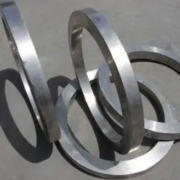
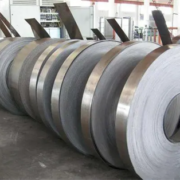
-1-180x180.png)


